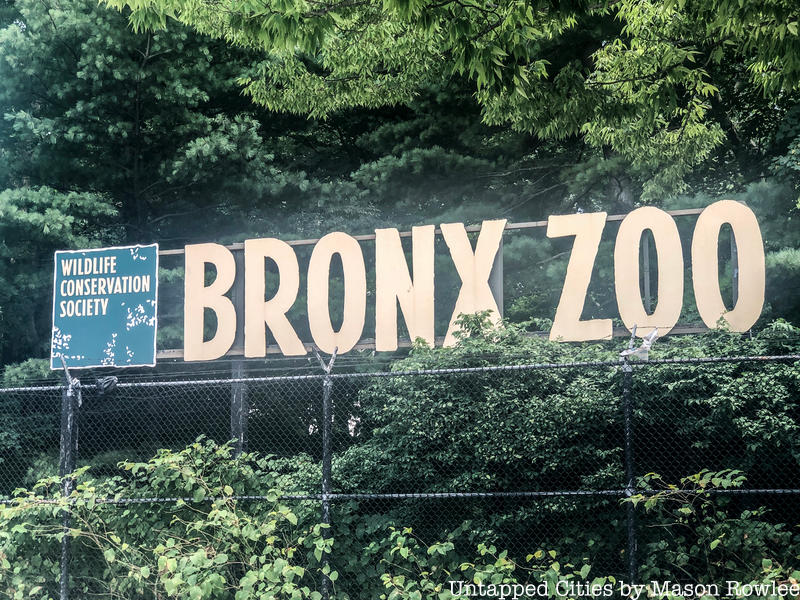
The Bronx Zoo is one of the most popular attractions in New York City. Filled with thousands of different animals of multiple species and award winning exhibitions, it has something for everyone. So, to expand your knowledge on this enormous attraction for your next visit, we have put together 11 of some of the zoo’s most interesting secrets.
10. The Zoo Is One of the Largest Wildlife Conservation Parks in the United States
In 1898, the City of New York designated 250 acres of Bronx Park to the New York Zoological Society to open a zoo that would serve to preserve native species and promote zoology. The zoo opened on November 4, 1899 with 843 animals featured in 22 exhibits. Today, as the largest metropolitan zoo in the country, it houses 4,000 animals of more than 650 different species across 265 acres of land.
The Bronx Zoo is actually run by the Wildlife Conservation Society, founded as the New York Zoological Society in 1895. It was one of the first conservation societies in the country with goals to “advance wildlife conservation, promote the study of zoology, and create a first-class zoo.” While they run the Bronx Zoo, they also operate the Central Park Zoo, New York Aquarium, Prospect Park Zoo, and the Queens Zoo.
The Society’s conservation efforts have also expanded across the globe protecting over 200 million acres of land in 65 countries. They also send their animals around the country to breed. In fact, they are highly successful in their efforts to protect and save species, beginning in 1907 when they successfully saved the American Bison from extinction.\
9. Several Architectural Features Are NYC Landmarks
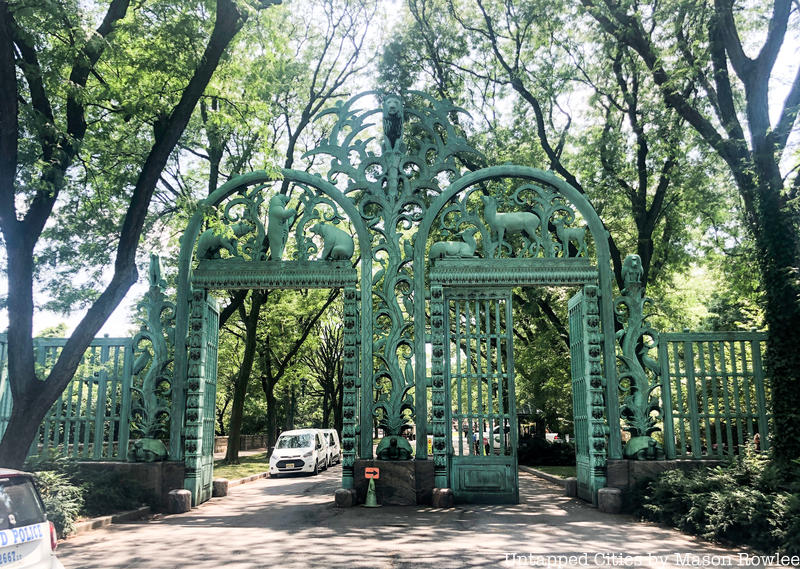
Since 1966, the Landmarks Preservation Commission tried to designate multiple buildings as official landmarks, but zoo director, William Conway protested, claiming the designations were obsolete and would deter zoo operations. But after a few tries, Landmarks was able to officially designate a few architectural features.
The landmarked areas are as follows: Rainey Memorial Gates at the north entrance of the zoo (January 1967), Astor Court (June 2000), and the Rockefeller Fountain (February 1968), donated to the Zoological Society in 1903. Astor Court is a portion of the zoo consisting of a raised, landscape terrace, which has the North and West Stairs leading up to it, along with six detached, brick and limestone neo-classical style buildings around the central Sea Lion pool. Fun fact! Rainey Gate also features 22 full-sized sculpted animals.
8. The Rockefeller Fountain was Moved from Lake Como
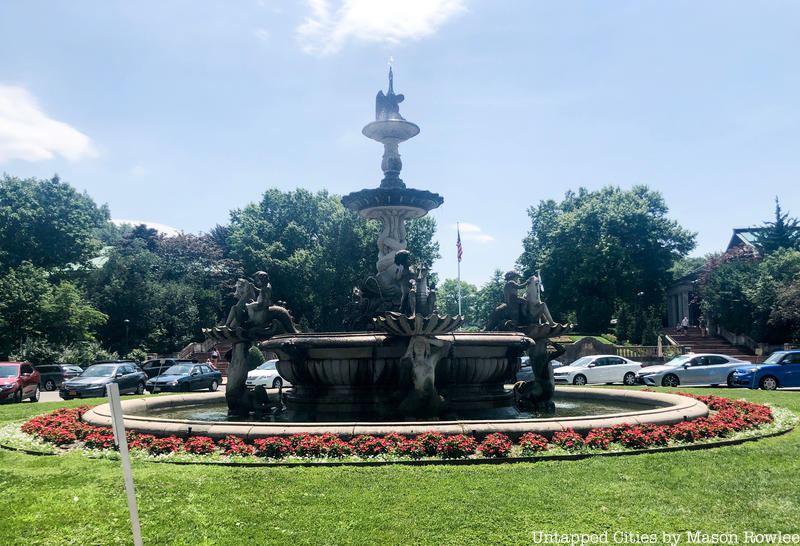
Even the Bronx Zoo was part of the city’s car-centric urban planning. The circle around the fountain was once used very actively for parking, as seen in this 1947 photo. The fountain itself was moved from the Piazza Cavou on Lake Como in Italy. The piazza was created atop landfill in 1860, and local sculptor Biaggio Catella designed the fountain – to much critique. Fun fact: the fountain used fresh water, instead of recycling it, and was a source of fresh drinking water. As such, other local fountains started experiencing water shortcomings. To add to the problems, the fountain began to lean, like Pisa, after just two decades.
Experiencing financial difficulties, the city of Como sold the fountain to an agent of William Rockefeller in 1901. It was donated to the zoological park, and originally placed in Bear Court. It was moved to its current location in 1910. Cars are still allowed there although there’s now more vegetation around the fountain to balance out the scene.
7. It Had The First Major Exhibit of Nocturnal Animals In The World
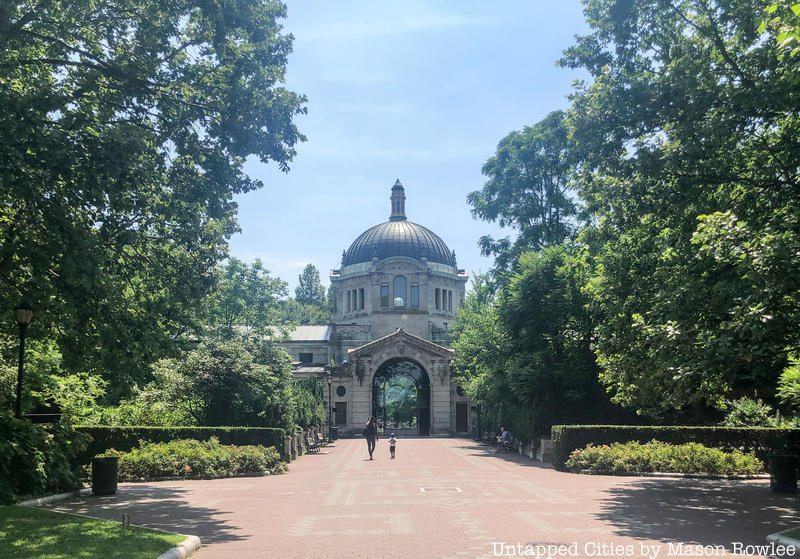
The World of Darkness exhibit which housed bats, sugar gliders, porcupines, lemurs, bush babies, and night monkeys opened in the 1960s as the first major exhibit of nocturnal animals in the world. In 2009, the zoo faced $15 million deficit so World of Darkness and Range of Rare Animals were forced to be closed. The animals in both of those exhibits had to be moved to other zoos since the Bronx Zoo couldn’t accommodate them anymore.
6. It Wasn’t Always Called The Bronx Zoo

When the zoo opened in 1899, it was originally called the New York Zoological Park. In 2004, the park’s name was officially changed to “Bronx Zoo.” However, it has been referred to as such since its opening.
6. The Cheetahs of the Bronx Zoo and Their Favorite Cologne
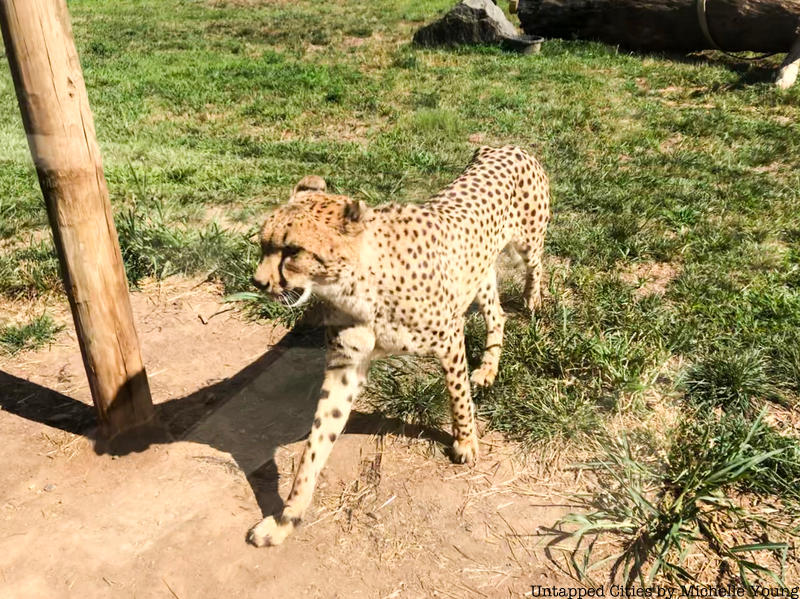
In 2010, researchers from the Bronx Zoo conducted a study to see how cheetahs reacted to different smells. Surprisingly, the two cheetahs spent more than 11 minutes sniffing and nuzzling up to a tree sprayed with Calvin Klein’s “Obsession for Men.” This knowledge has helped many researchers lure out big cats from the wild for tracking and observation. According to Daily Mail, program director Roan Balas McNab in Guatemala hear about the potency of “Obsession” and decided to use it in the field with jaguars.
McNab said that three as many jaguars walked by the scented cloth and even lingered around. McNab was able to get images he has never been able to get before because of this. The only problem this research seemed to have was that scientists were having a hard time finding the perfume near where they’re conducting research.
4. The Bronx Zoo Once Exhibited A Man In A Cage
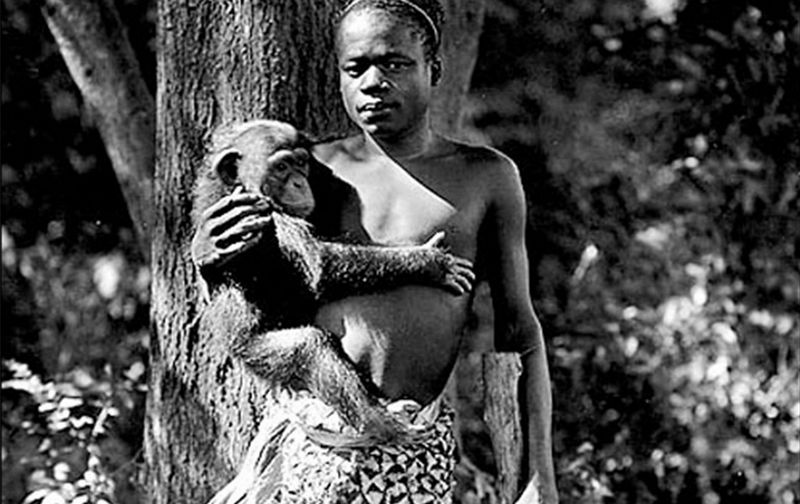 Image from Wikimedia Commons
Image from Wikimedia Commons
This particular fact is a ugly dark stain on the zoo’s reputation and the scientific community as a whole. Though it is lauded today as a ground-breaking zoo run by an organization heading conservation efforts all over the globe, this was a little misstep along the way. During September 1906, the zoo exhibited, in an iron house monkey cage, a young Congolese by the name of Ota Benga, who was advertised as a so-called “pygmy.”
The boy, at 103 pounds and 4’11” tall, was sanctioned to be exhibited by the zoological society, the mayor, scientists, the public, and national newspapers around the country. This exhibit goes back to the heavy racism that dominated science and academia for many years, and many members of the public went along with it, as evident by the 40,000 people visited the zoo per day during this time.
Soon after the exhibition opened, Benga started resisting his captivity becoming more aggressive with the zoo keepers when they tried to put him back into a cage. Benga’s protests finally earned him his release and was put into the care of Reverend who ran an orphan asylum in Brooklyn.
Benga stayed in the United States, slowly trying to adjust to the lifestyle. In the last six years of his life from 1910 to 1916, he lived in Virginia where he found work and became a beloved member of the African American community there. But his story ends on an even more tragic note as Benga suffered from depression and ultimately, committed suicide.
3. The African Plains Exhibit Was The First Of Its Kind
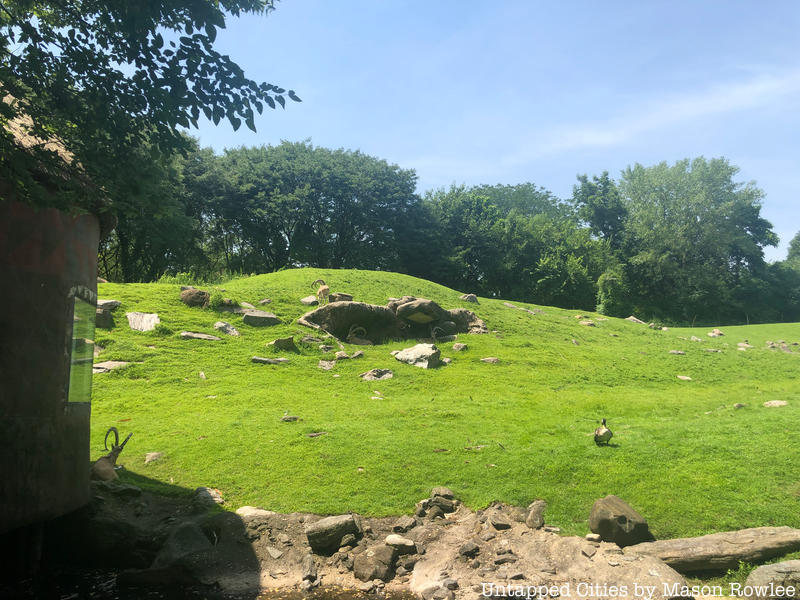
Since its inception, The Bronx Zoo has aimed to keep animals out of cages. The African Plains exhibit opened in 1941 and was the first zoo exhibit in the country to let visitors see predator and prey in a naturalistic setting. Lions, giraffes, gazelles, nyalas, and wild dogs are allowed to roam freely as they would in their natural habitat. In the African Plains exhibit, the animals are only separated by a series of deep moats, with the rest of the exhibit replicating the African environment in the Serengeti, everything from the fake rocks to the local trees have been tweaked to resemble the plains they come from.
2. There Have Been A Few Weird (And Scary) Incidents At The Zoo
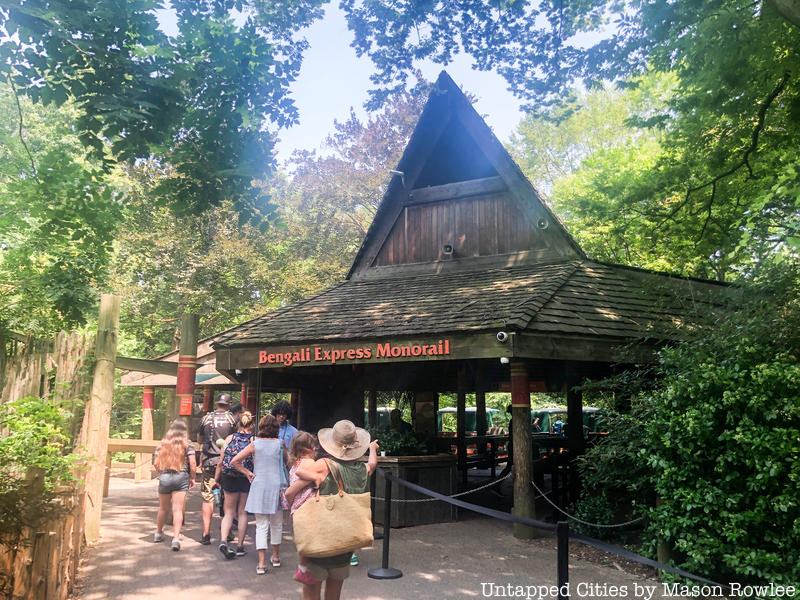
There are always those crazy stories that come out about people doing weird things in zoos or there being some bizarre incident turned deadly. The Bronx Zoo has, unfortunately, been a victim to incidents of human stupidity. In 2001, a 32-year old, Peter Vitique scaled a 20-foot wall in the Congo Gorilla Forest exhibit and apparently stripped down to his rex boxers in order to be “one with the gorillas.”
In 2004, another man stripped off his clothing and jumped into the caiman tank in the World of Darkness exhibit (Caiman’s are related to alligators if that give’s you any idea of how dangerous they are). He was pulled out by police and zookeepers before he was hurt.
On Friday September 21, 2012 a very weird and terrifying incident occurred. 25-year old David Villabolos jumped from the monorail pictured above and into the tiger enclosure where he proceeded to be mauled by 400-pound Siberian tiger, Bachuta. Initial reports claimed Villabolos accidentially tripped into the enclosure, but in a statement he declared “Everybody in life makes choices.”
It was another incident of wanting to feel closer to animals. Villabolos survived the attack and Bachuta was not put down, since it was not her fault. Zoo Director Jim Breheny declared the tiger “did nothing wrong.” As a skilled predator, Bachuta could have easily killed Villabolos in the 10 minutes he was alone with animal. But the tiger didn’t do that and so did not need nor deserve to be put down.
1. The Zoo Has Bred More Snow Leopards In Captivity Than Any Other Zoo
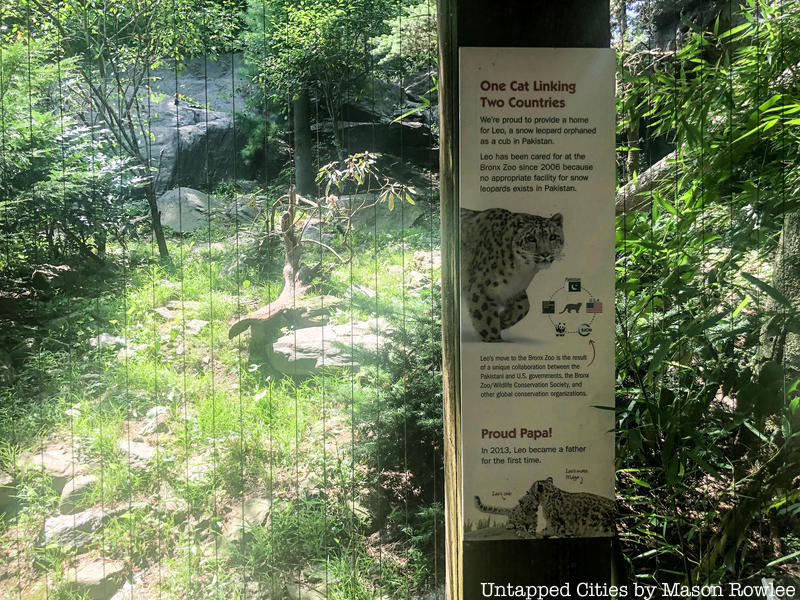
Since 1903, the Bronx Zoo has bred more than 70 snow leopards contributing to the regrowth of the population of this endangered species. This zoo has also bred the most snow leopards in captivity than any other zoo in the world. As of now, there are 10 of these beautiful animals in the zoo’s collection, with the most recent addition being two male cubs born on May 6, 2014. To see some more of these cute cubs in action, check out the video of them below playing in the snow.
Bonus: The Congo Gorilla Forest Exhibit Is One Of The Largest Of Its Kind

The zoo’s Congo Gorilla Forest was one of the WCS’s most ambitious projects. Opening in 1999, it’s a 6.5 acre complex that focuses on the animals of Central Africa. The exhibit itself houses 400 animals of 55 different species, featuring mandrils, okapi, and one of the largest breeding groups of lowland gorillas in North America. In January 2015, two gorillas were born making the total number of gorillas at the zoo at nineteen.
What makes this exhibit special is the immersive experience it gives. It replicates the environment of the African rain forest, featuring several different climates, and tunnels for visitors to walk through. What’s most important though is that the proceeds from the ticket go directly to the WCS’s preservation efforts in Africa. Since its opening, the exhibit has raised $12.5 million in admission fees. It is one of the zoo’s most popular attractions.
Watch below to see the two baby gorillas make their zoo debut in 2015.
Next, check out 12,000 Vintage Photographs from Bronx Zoo and New York Aquarium to Be Preserved





